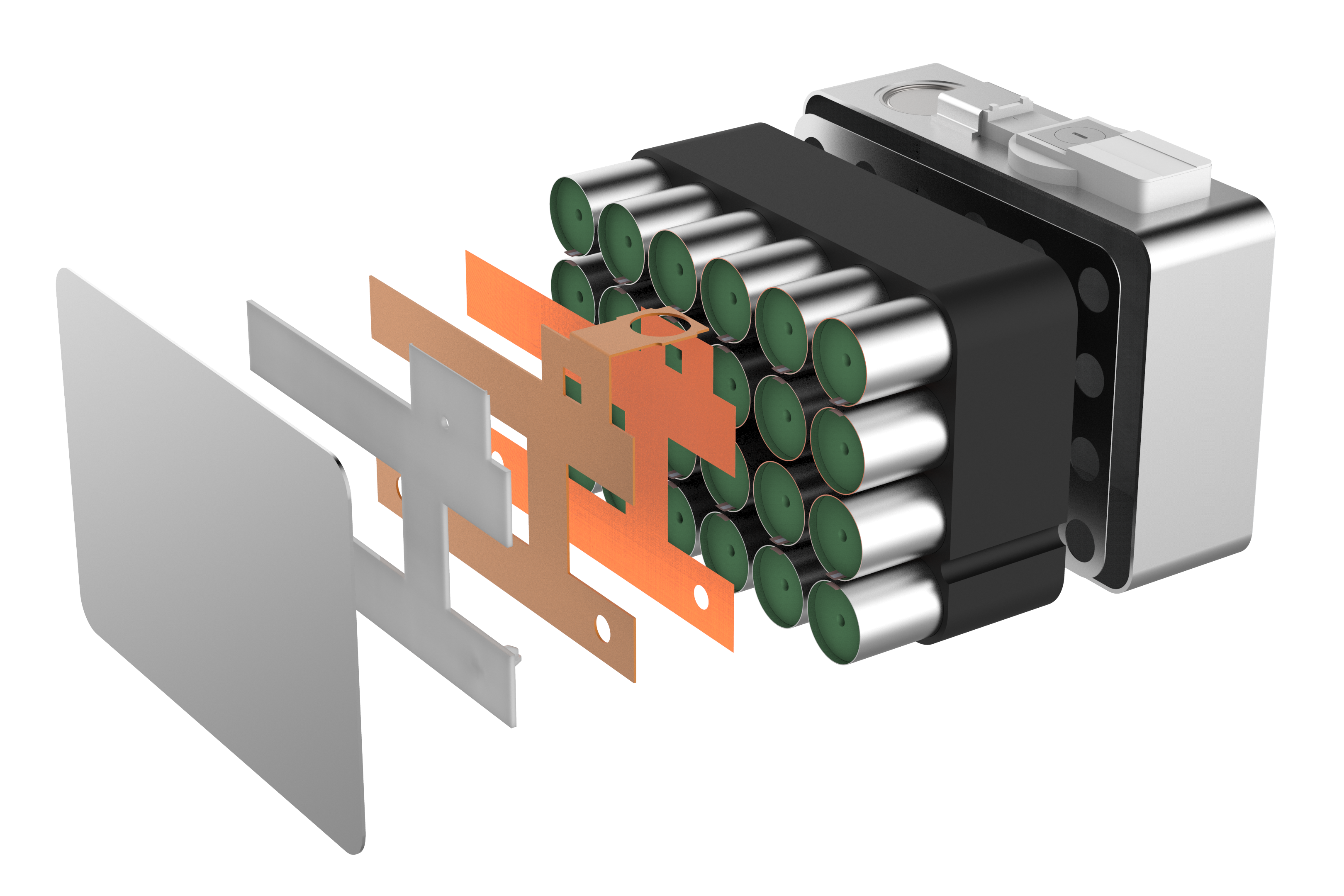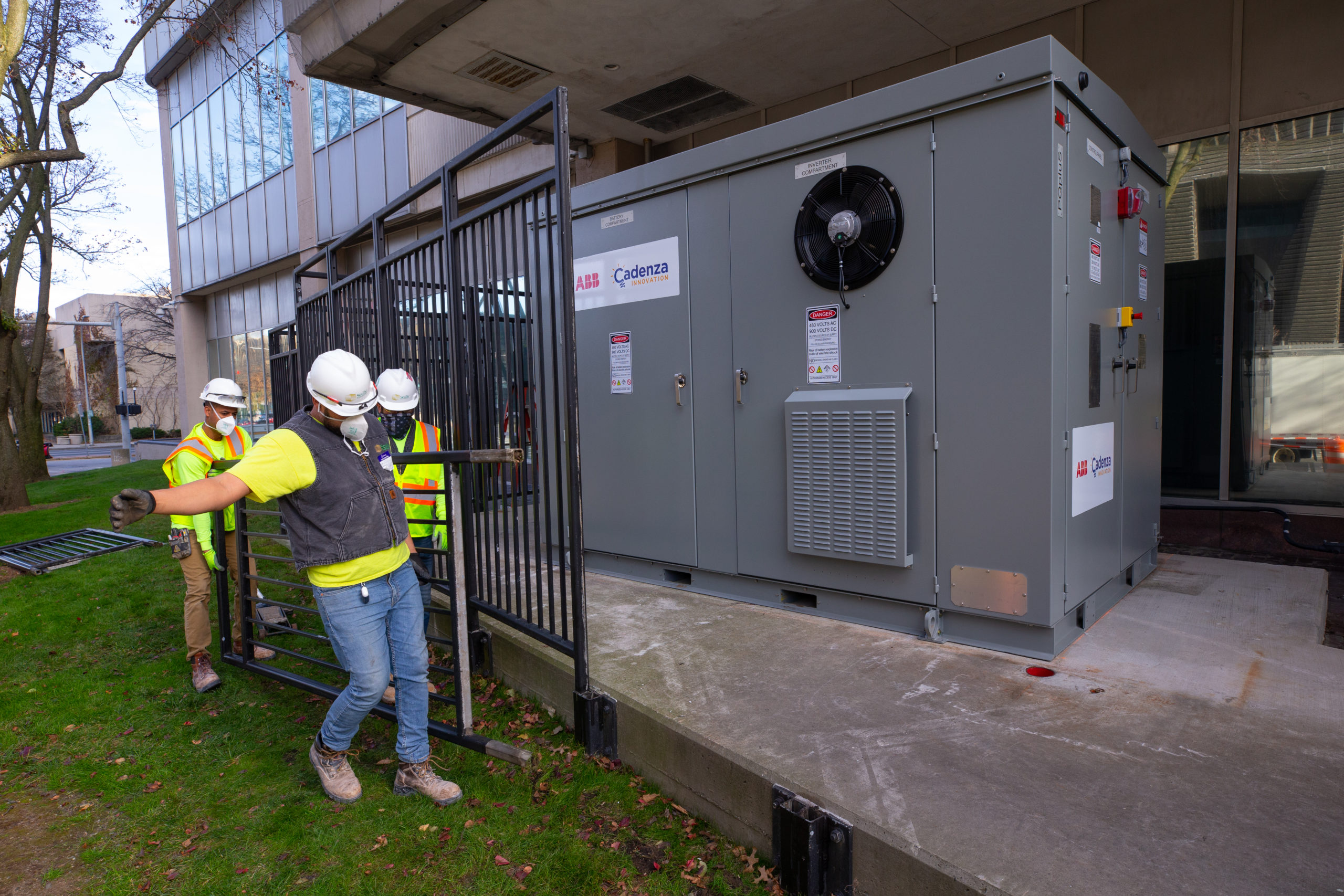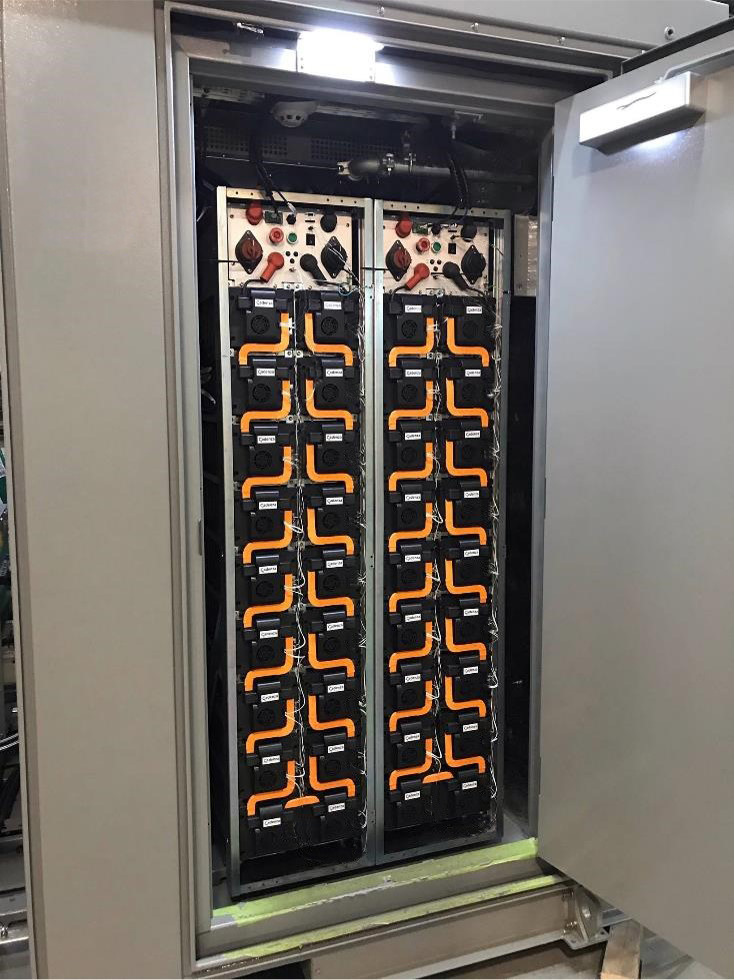‘We think we’ve found the answer’: The ‘Supercell’ that could bring safe energy storage to New York
Energy Storage NewsPublished: 21 Dec 2020, 11:31
By: Andy Colthorpe
New York has among the world’s tightest rules on fire safety and regular readers of this site will be aware that that has had a big impact on the ability to site lithium-ion based battery energy storage systems (BESS) within the boundaries of the state’s urban regions.
While the development of large-scale systems is taking place in less densely populated upstate areas of New York, commercial and industrial (C&I) battery storage, which has been used elsewhere around the country to help businesses manage their energy costs and the wider network to adopt greater shares of renewables, has not really been able to gain a foothold.
A couple of weeks ago the New York Power Authority (NYPA) – a public-benefit corporation which serves around 25% of the state’s electric load – began trialling an energy storage system using lithium batteries based around start-up Cadenza Innovation’s ’Supercell’ architecture. Wrapping individual cells into a protective housing, the technology is a low-cost way to prevent thermal runaway from cascading through a battery rack and causing fires.
NYPA has also this month published its strategic plan for achieving rapid decarbonisation, perhaps even five years ahead of the New York climate legislature’s already-ambitious 2040 target, with the utility citing that it will focus in continuing to develop and demonstrate long-duration and short-duration energy storage technologies.
The utility is putting its resources to work in supporting Cadenza and others such as zinc battery company Zinc8 and the new trial puts NYPA’s neck on the line, metaphorically speaking; the 240kWh ’Supercell’ system has been installed at NYPA’s own offices in White Plains.
NYPA’s R&D lead Alan Ettlinger and Cadenza Innovation CEO Christina Lampe-Onnerud spoke with Energy-Storage.news as the trial got underway, with Ettlinger explaining why, with the ‘Supercell’, NYPA may have found “the answer” to many of the concerns preventing battery storage from making it big in New York.
What’s the background behind this project?
Alan Ettlinger, NYPA, R&D director: We are a state entity, and one of our missions is to further the Governor’s goals and the state’s goals. There is something in New York state called the Climate Leadership and Community Protection Act, which kind of sets the Governor’s goals going forward. One of those goals is to have 3,000 megawatts of energy storage by the year 2030.
When we first saw this [technology] we said: this is something that can get us to that goal. As you may know, New York State is an urban area, a lot of New York City, Syracuse, Albany, Buffalo. With the inherent issues that there have been in the classical lithium-ion battery, in the R&D section we are really looking for a solution for energy storage that can let us bypass those safety concerns and we think Cadenza is that product, or that technology.
The technology prevents thermal runaway, which really means that if there should be an incident or an issue with one of the cells, that will not go on to the next cell. So that’s the inherent safety feature that we think will enable Cadenza and the Power Authority in the future to install this type of technology in urban areas, which I think is probably one of the key things that has been a challenge around the world. We’re looking forward to this installation, it’s something that’s new and exciting to the industry.
The 3,000MW by 2030 target kind of set a marker down for the industry, but New York has those stringent fire safety rules. So while we’ve known about some large-scale systems in upstate areas there hasn’t been a lot in the urban centres for us to report on.
Christina Lampe-Onnerud, CEO, Cadenza Innovation: This is exactly why I started Cadenza Innovation in 2012. We had already seen the prosperity of lithium-ion, through portable power and EVs and we had the luxury of sitting back to say: “If we could do it all over again, with the market dynamics and the needs that we know of in the market and kind of be humble students of the past, what could we bring with us?”
We then decided safety really has to be at the forefront. We rounded all of our innovation around the fact that we cannot afford fault-free energy storage. But if we make it something that is a service event, instead of a catastrophe, you will have lower building costs, you will have lower insurance costs, you will have lower installation costs.
The fact that safety is baked into designs, instead of having safety wrapped around the systems, make the systems themselves more compact and easier to manage basically.
This is such a glorious opportunity for us to finally come out of the back studies and the labs and just say: “Look, this actually works”.
AE: One of the actual challenges has been describing the technology to the insurers, and to the reviewers. Because when we say this is a modified lithium-ion battery, the automatic thought is that this is just like all the other lithium-ion batteries. And I think explaining what we’ve done, explaining the UL fire testing that we’ve done and why the results have been different has been another additional hurdle that we’ve had to jump over to get to where we are today.
Lithium-ion’s long road to supply chain maturity
I know there’s a lot of different potential answers to the various questions around safe battery storage at the moment and I’m aware that NYPA is working with some zinc batteries as well. So why to go with a different form of lithium, as opposed to a completely different kind of battery? Might the eventual optimal approach be a combination of these sorts of things, or are these different batteries kind of in a race against each other?
AE: They’re really not in a race against each other. Being in the R&D section, we’re always looking for new and innovative ways to do things – we view the Power Authority as kind of the living lab where technology can actually be tested in our grid, the zinc flow battery, is actually a long term storage battery, designed for 10-12 hours and longer.
The Cadenza battery as a lithium-ion battery, which is more of a short range battery. The zinc battery is really solving a different issue, what happens if we have a blackout? What happens if I need to store, over extended periods of time, [perhaps between] 12 and 14 hours of energy storage. So it’s not really solving the same type of issue. But we never put all our eggs in one basket, we’re really looking at various technologies. I wouldn’t so much say that they’re in competition, I would say they kind of run in parallel, solving different types of issues.
CLO: What is so exciting about lithium-ion is that there’s an existing supply chain. There is a wide understanding of what lithium-ion can do and what the potential is of the technology. And batteries are complicated. It takes a long time to go from a first demonstration into even multiple generations. You think back to [how] lithium-ion [was] invented in the 1970s, first commercialised in the 1990s, reaching cars in the early 2000s. And now the grid in the 2020s.
It has come into a realm of supply chain maturity: there are multiple factories in the world that understand how to do this, which also means that all the automation equipment is ready, you can deploy manufacturing in multiple countries, it becomes somewhat generic in how you make components. All of which we took into consideration to lower costs.
What sort of percentage of that overall deployment of storage in New York do you think is going to require a much safer kind of solution that perhaps something like the Cadenza Supercell could help with?
AE: It’s hard to say. I’m really focused on the R&D end – but right now, most of the large-scale energy storage systems [in New York] are located upstate. We’re doing a 20MW [project] up in the North Country and there have started to be installations down closer in the city, smaller installations, but I think that that safety concern is there.
I really don’t have a handle on what percentage are going to be in the city versus out of the urban areas, but it’s twofold. This unit that we’re putting in is really to do peak shaving, [reducing] the cost of running electricity in a city, where we kind of store the energy off-hours when the electricity cost is low and use it during the day, the grid scale storage [performs applications] on a much larger scale than that.
Our CEO Gil Quiniones has always said that the technology to reach the goals that have been put in place not only by New York State, but other states in the country and around the world – a lot of that technology is not yet developed. It’s in production, some of it is still a gleam in somebody’s eye, but the technology that’s commercially available today, will not get us to those to those goals. And that’s why this thing is so exciting. And it presents an opportunity, it’s a step, to get us to those goals.
With New York being an urban landscape and lots of big buildings, if you had a fire situation in one of those buildings it could be potentially hugely expensive, hugely disruptive, and so on.
AE: Right, and to Cadenza’s credit as we went through this project, wherever we had a doubt, there was no question we were going to do it the safe way. And add things in where they may not have been even required by code. As this is really the first-of-a-kind type of installation, we want to make absolutely sure. We feel confident that what we’re about to install in our White Plains offices is as safe as anything else out there.
The Cadenza Innovation battery storage system deployed at NYPA. Image: NYPA.Clever system, stupid cells
In terms of the footprint, I know that one of the reasons why people aren’t considering flow batteries for urban settings in a lot of cases is because they are basically a lot larger. In terms of the cadenza footprint versus regular lithium ion, is it basically just at the sort of cell and pack level that there’s any real difference?
CLO: Part of our hypothesis was, let’s not reinvent everything. Let’s go as much as possible with standards. So there is a general standard of how big is a rack, it’s roughly as tall as a person.
We also followed our experience from early deployment in a previous company in the automotive sector, where we said the units cannot be too heavy. The smallest building blocks should be so a person can hold it in one hand. Even at an odd angle, you could go in and service it. Those considerations were part of it.
We use smaller electro-chemical units, stacked very closely together in a way that makes them safe. The safety is on the inside.
Our philosophy has always been that mechanical engineering and chemical engineering has to work in tandem and has to activate if something goes wrong before electronics kicks in. Sometimes electronics fail, and instead of having ‘double electronics’, [we said] “why don’t we make this cell a stupid cell?”
Meaning: if something wrong is fed to the cell, the cell just shuts itself off, you can do that with a super inexpensive switch that just disconnects, it just opens and you have no current anymore. If you put a wrench across an interface and you hard short between cells, it just shuts down. If you have an electronic signal that goes in the voltage is too high or something goes wrong, the cell shuts down, and there’s a warning light go up. So it’s basically a service call never a catastrophe. And that is kind of the whole idea.
Every block is about as big as a heavy book, about 2kg. The racks are basically man height, and you can stack them next to each other. In this particular installation, there are four racks, but you could put in 200 racks. It’s super easy to scale. And because you can string them together in a new way, you don’t have to have a huge container. You could put them in different places and still have them interact.
AE: One of the goals, at least of what the Power Authority is looking at, is that in an urban environment, you don’t have a lot of room in these office buildings and even if it was outside, something that would go on a street or something like that, there’s not a tremendous amount of footprint there to store these units. That becomes a vital decision point that the owner of the building or owner of a warehouse or something like that has to make.
From NYPA’s point of view, as the trial begins, how will you be assessing the performance of the system?
AE: The data from the unit that’s going to be installed will be brought into our integrated operating centre that we have in White Plains, which monitors all the equipment in our facilities and our plan is that we will be monitoring it, we will be determining the response that it gives, what the economic potential economic savings would be. Even though it’s a small unit, we can get that information out of the unit – and we will be monitoring the safety features, obviously.
Cover Image: The Cadenza Innovation Supercell, including battery cell jelly rolls of about 2 inches thickness, with each block containing 24 cells. Image: Cadenza Innovation.
Stay up to date with the latest news, analysis and opinions. Sign up here to the Energy-Storage.news Newsletter.


